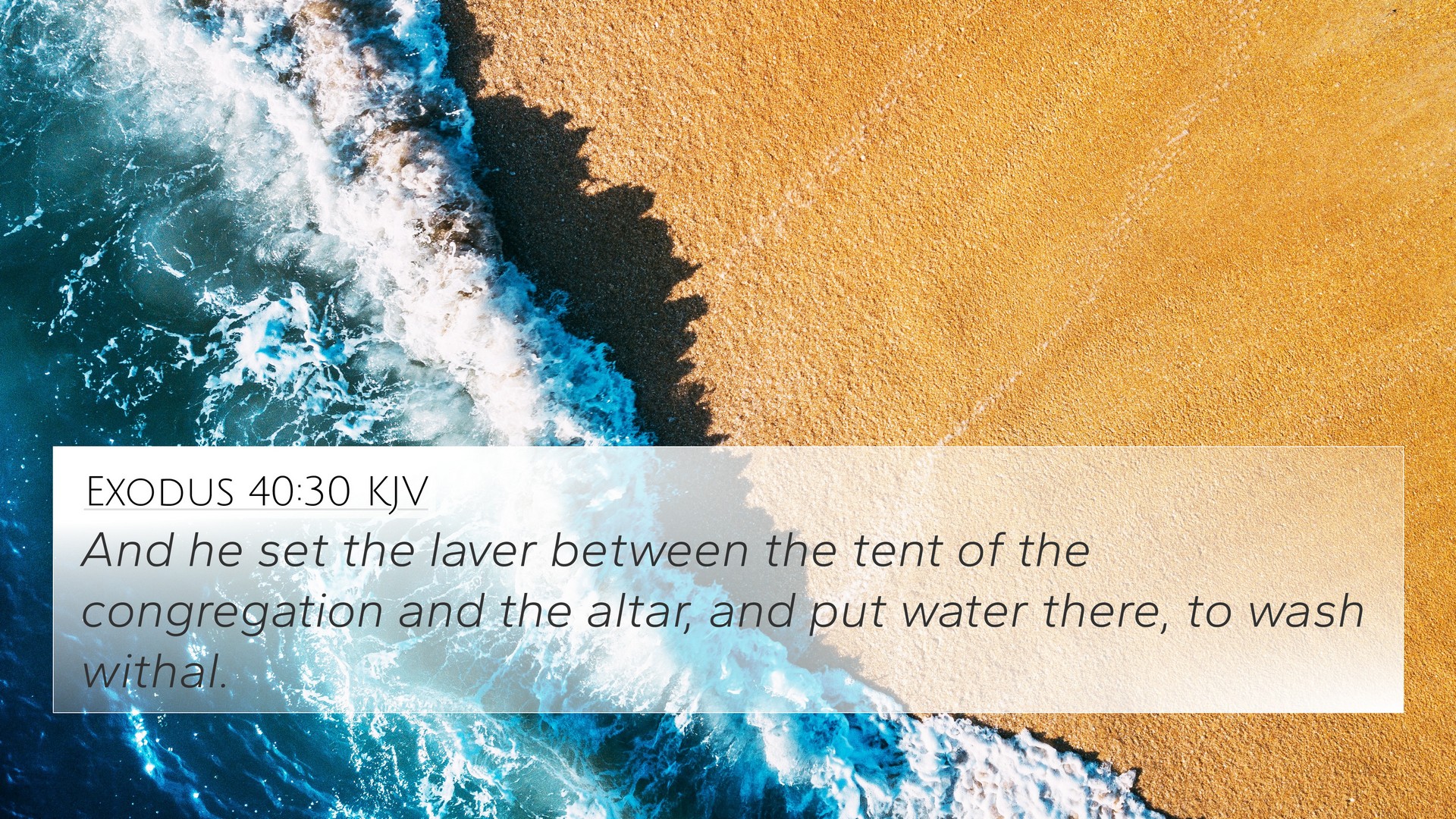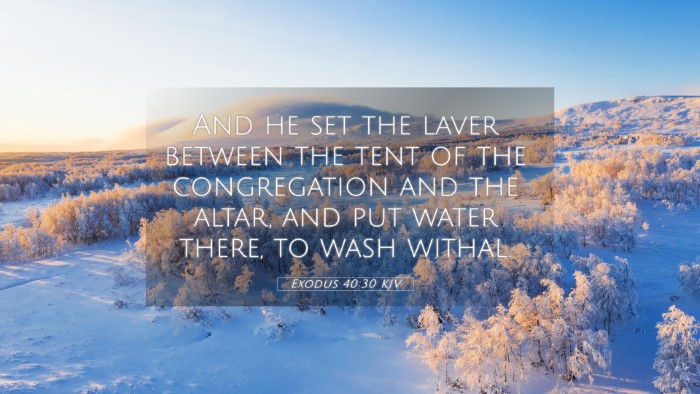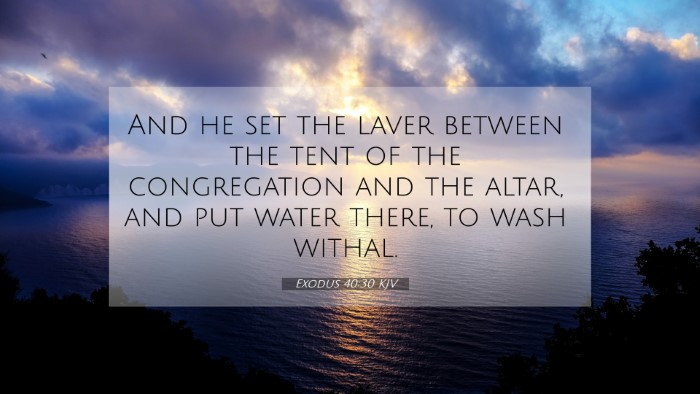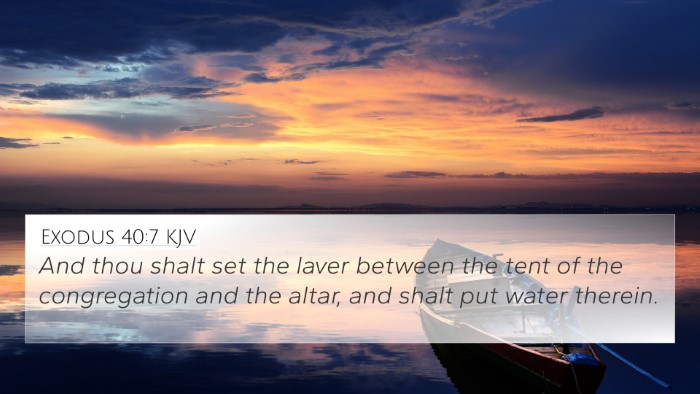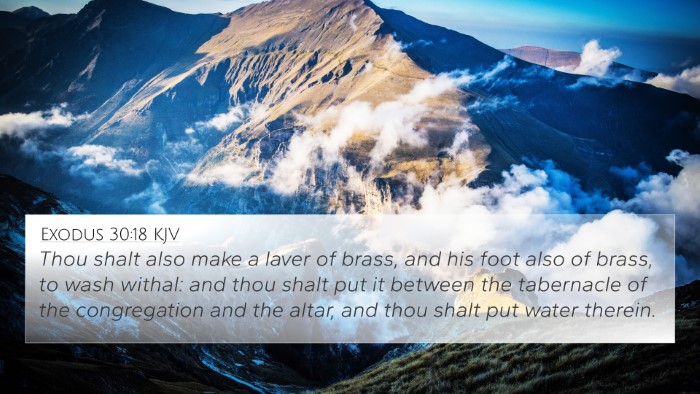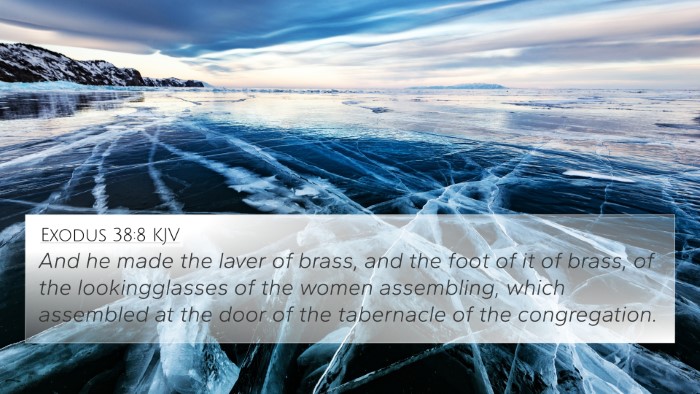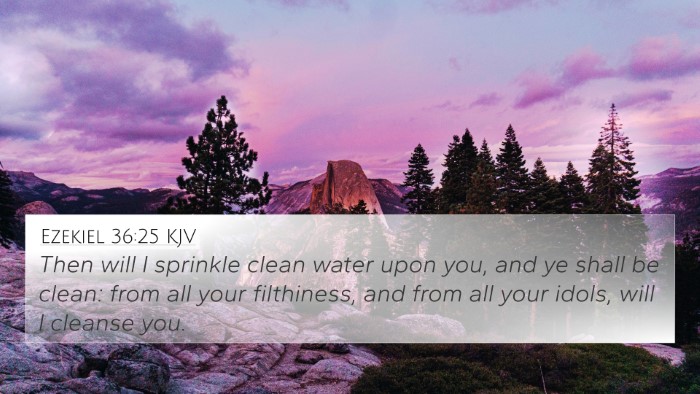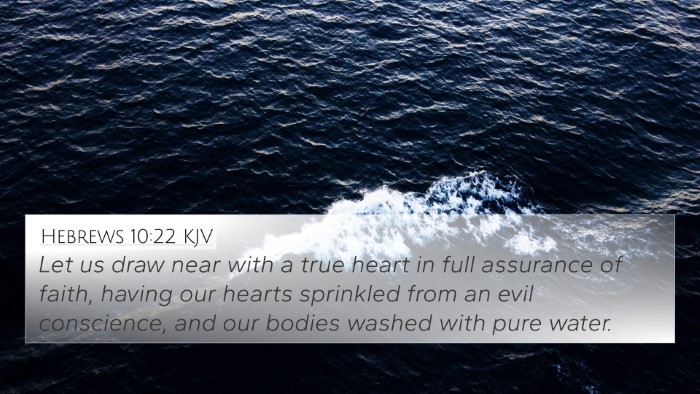Understanding Exodus 40:30
The verse Exodus 40:30 states:
"And he set the laver between the tent of the congregation and the altar, and put water therein, to wash withal; and Moses and Aaron and his sons washed their hands and their feet." (KJV)
Overview of Exodus 40:30
This passage is part of the concluding instructions for the Tabernacle, detailing the establishment of the laver for ritual purification. It holds significant importance in the context of worship practices and the holiness required for approaching God.
Commentary Insights
Matthew Henry's Commentary
Matthew Henry emphasizes the importance of the laver as a symbol of purification. He notes that the priests' washing signifies the necessity of being clean in order to serve God. The act of washing hands and feet before ministering reflects not only physical cleanliness but also a spiritual readiness to undertake sacred duties.
Albert Barnes' Notes
Albert Barnes provides insight into the practical implications of the laver's establishment. He interprets the instruction as a safeguard against approaching the altar with unclean hands, illustrating the serious nature of worship in the presence of God. The water in the laver represents both literal and metaphorical cleansing, making a profound statement about the holiness of God and the need for atonement.
Adam Clarke's Commentary
Adam Clarke focuses on the symbolic aspects of the laver, explaining that it represents the Word of God which purifies the believer. He also discusses the placement of the laver, strategically located to remind the priests of their duty to maintain holiness. Clarke suggests this act of washing foreshadows New Testament themes of grace and the spiritual washing through Christ.
Bible Cross-References
This verse can be linked to several key passages that illuminate its meaning further:
- Exodus 30:18-21: Details the construction and purpose of the laver, emphasizing the necessity for washing before service.
- Leviticus 8:6-7: Discusses the priestly anointing and washing, highlighting the importance of physical and spiritual purification.
- John 13:10: Jesus’ statement about the need for washing represents spiritual cleansing, resonating with the theme of purity.
- Titus 3:5: Connects the idea of washing and regeneration, reflecting the deeper implications of cleansing through the Holy Spirit.
- Hebrews 10:22: Encourages believers to draw near to God with a true heart in full assurance of faith, emphasizing the cleansing aspect of faith.
- Psalms 24:3-4: Asks who may ascend God’s holy hill, highlighting the necessity of clean hands and pure hearts.
- Isaiah 1:16: Calls for moral and ritual purity, linking to the theme of preparation for divine service.
Thematic Connections
The themes of purification and holiness permeate throughout both Testaments. The laver in Exodus serves not only as part of the rituals of the Old Covenant but also establishes a precedent for spiritual cleanliness that is echoed in the New Testament teachings.
Connecting Old and New Testaments
Understanding the laver involves recognizing its significance as a precursor to New Testament doctrines:
- Comparison with Baptism: The act of washing connects to the Christian practice of baptism, symbolizing death to sin and rise to new life.
- Christ as the Laver: Metaphorically, Jesus represents the ultimate purification, providing a means for believers to be cleansed from sin through His sacrifice.
- Holiness in Service: Both the priests' washing and the believer's call to holiness underline the importance of approaching worship with reverence and purity.
Tools and Methods for Bible Cross-Referencing
To deepen your understanding of Exodus 40:30, consider utilizing various tools for effective Bible cross-referencing:
- Bible Concordance: A book that lists words and phrases and where they occur in the Bible.
- Bible Cross-Reference Guide: Helps identify themes and connections across the scriptures.
- Bible Reference Resources: Online databases and applications that organize biblical texts for easy reference.
- Comprehensive Bible Cross-Reference Materials: Allows for an in-depth study and thematic exploration of connections between verses.
Conclusion
In conclusion, Exodus 40:30 is more than a historical account of the construction of the Tabernacle’s laver; it serves as a vital component of the biblical narrative that emphasizes the need for purity when approaching God. Through cross-referencing this verse with various biblical texts, believers can gain a richer understanding of its themes and implications. The connections between the Old and New Testament provide a profound insight into the continuity of God's message regarding holiness and service.
For anyone seeking to delve deeper into the complexities of this scripture, I encourage the study of these related verses and the utilization of various cross-reference tools for a comprehensive understanding.
